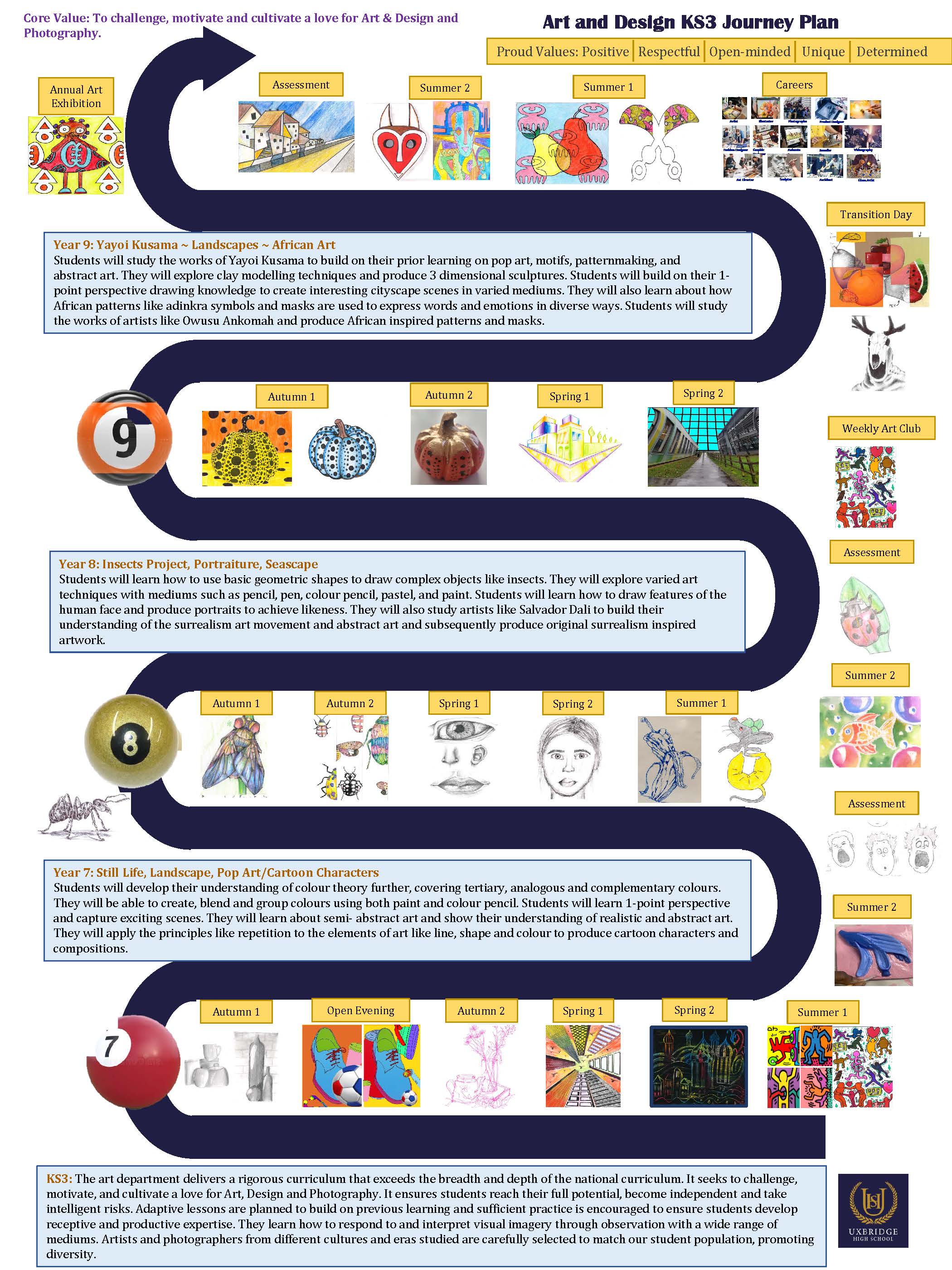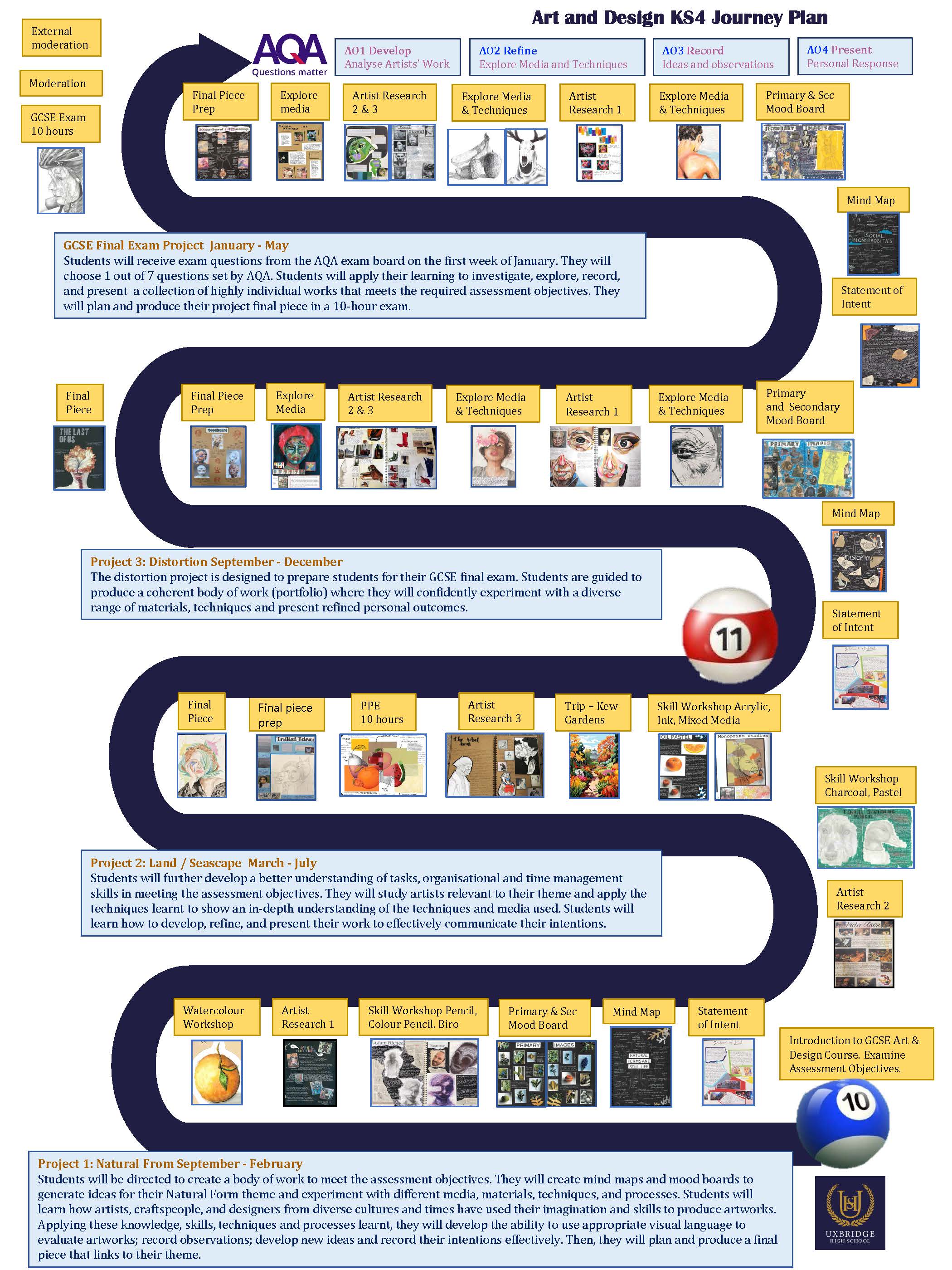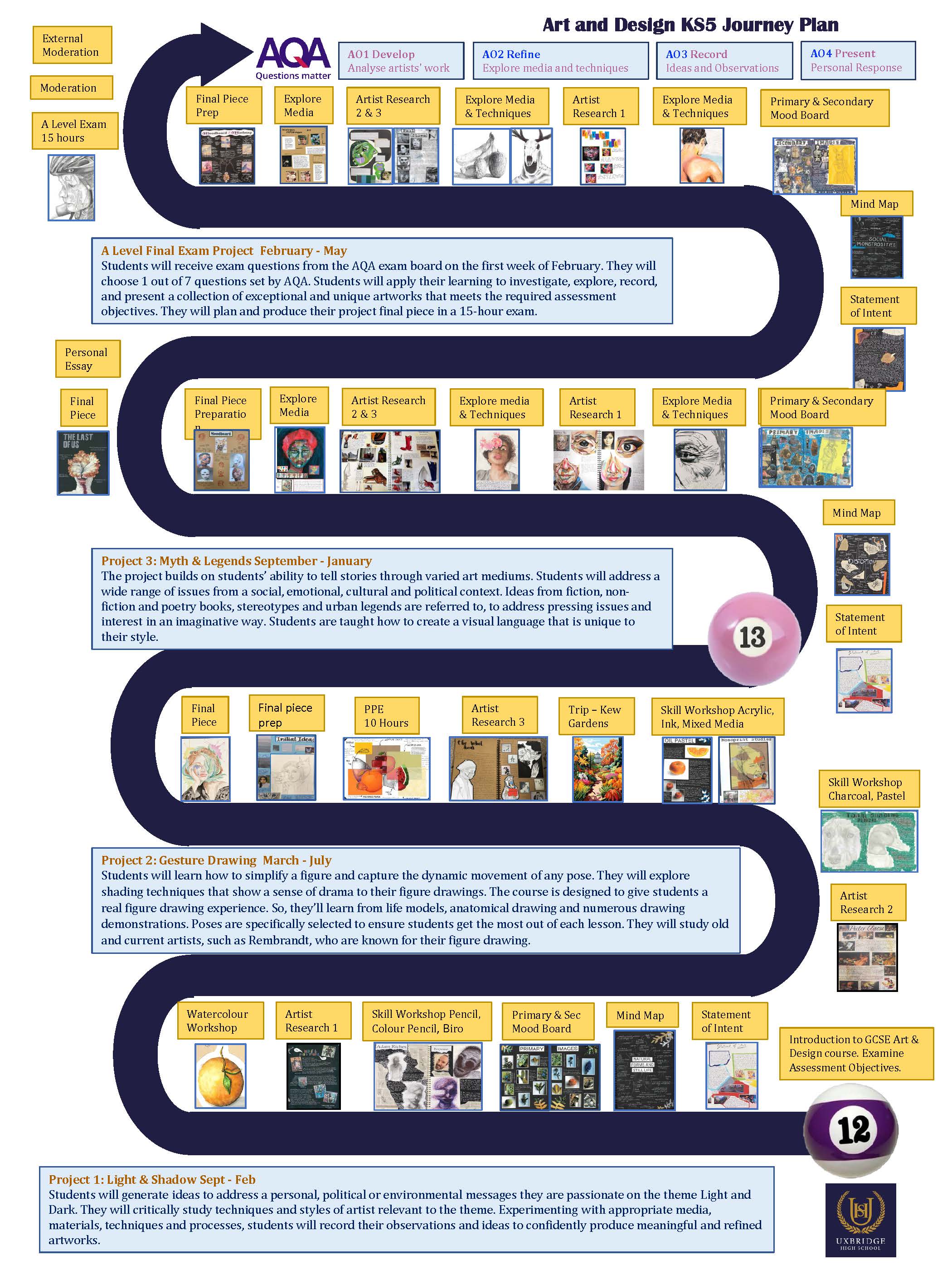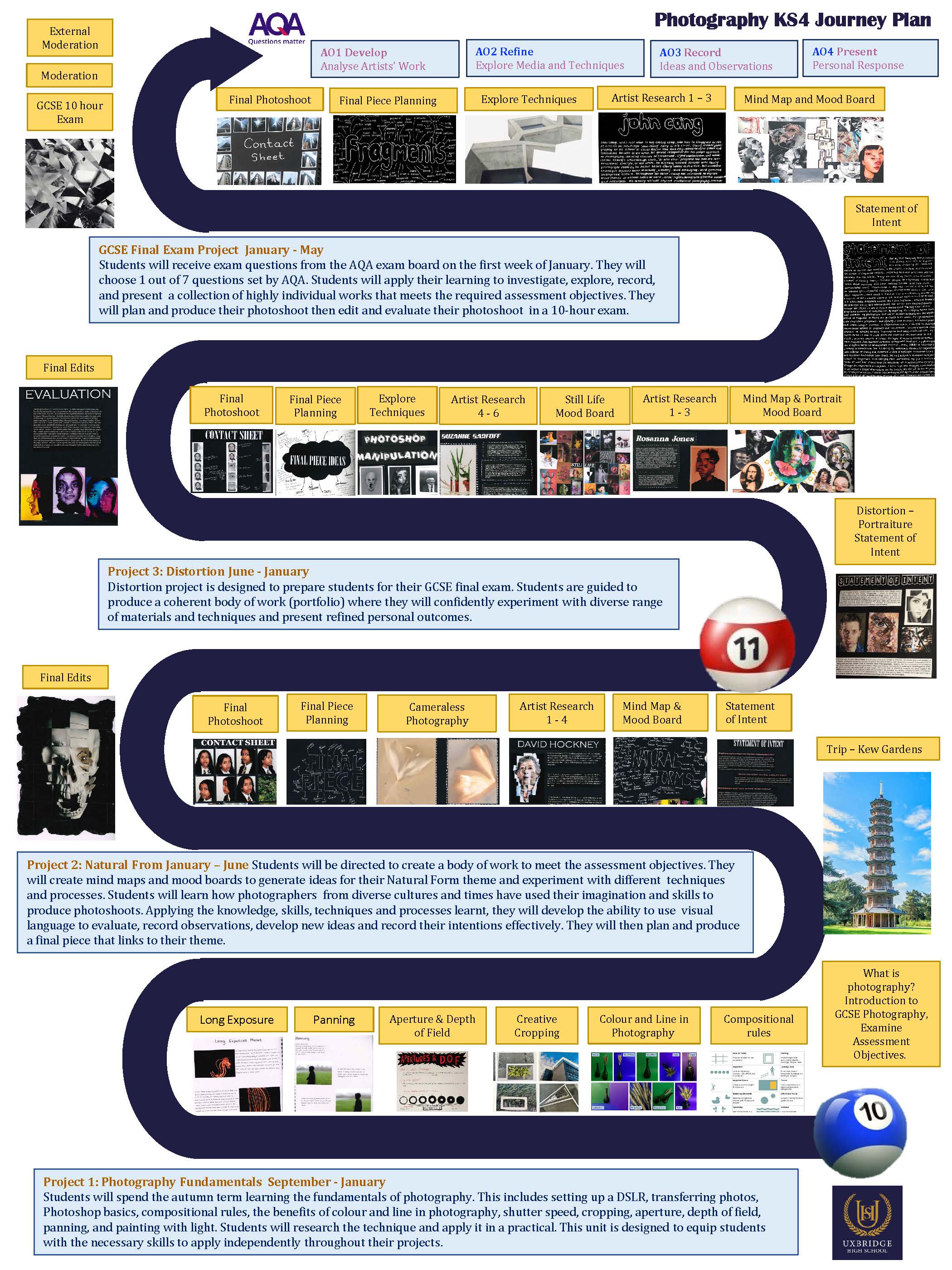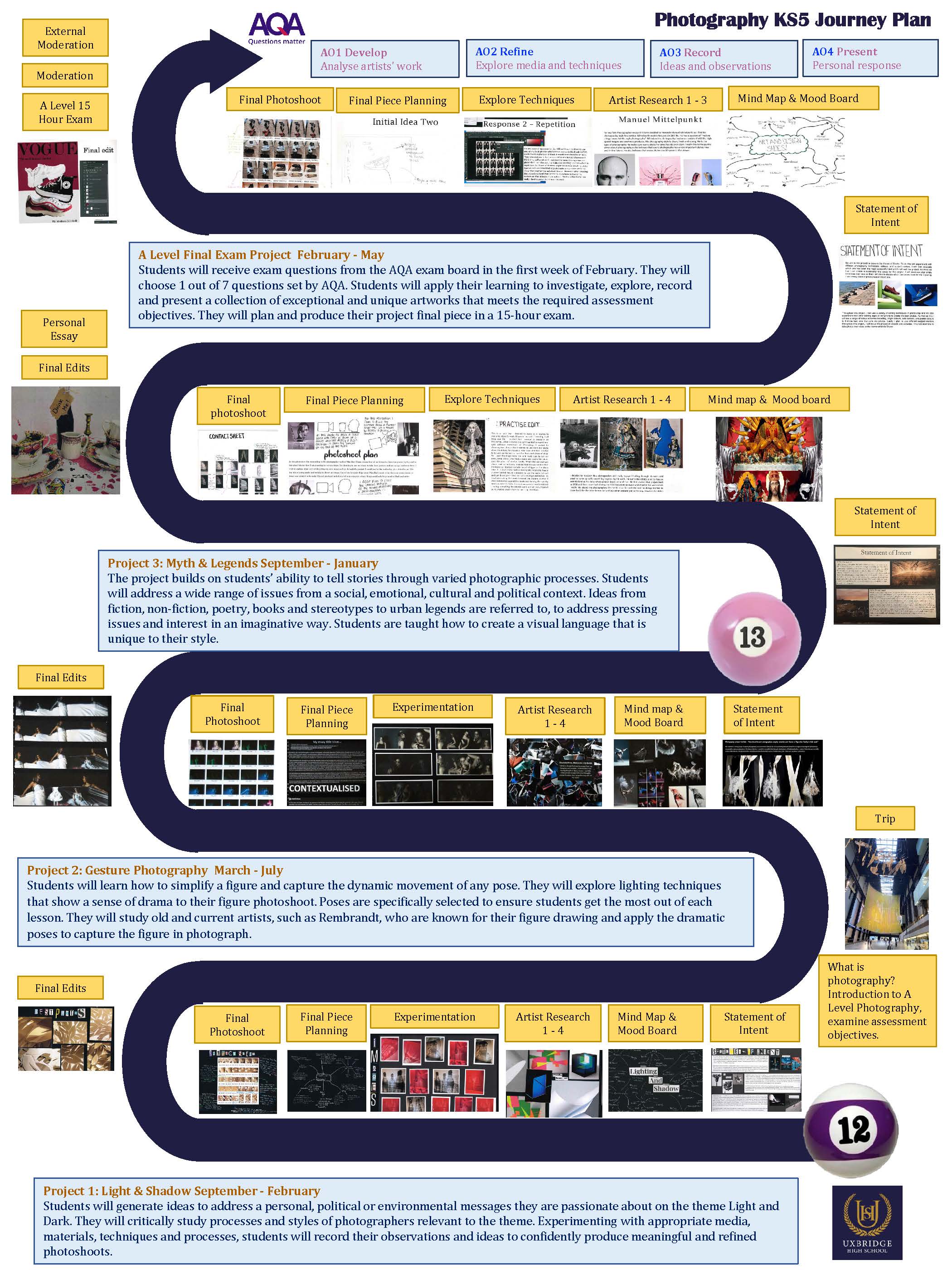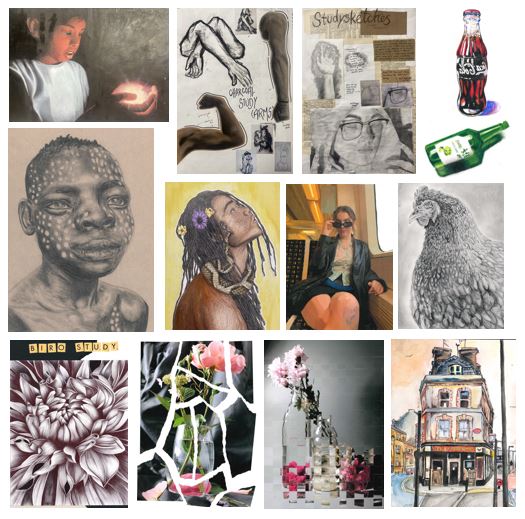Art & Design
The Art department delivers a broad, vigorous curriculum that exceeds the breadth and depth of the national curriculum. It is designed for students to gain a thorough and practical/theoretical understanding of what it is to be an artist and the value of creativity in an ever-evolving world. It seeks to unlock the full potential of our students and encourages them to take intellectual risks in a supportive environment. Art challenges industry-wide perceptions and encourages students to think beyond the classroom.
Why study this subject?
- Students are taught how to respond to images through artist study, observation & analysis.
- They learn how to interpret visual information and ideas with a variety of materials and techniques.
- Creativity and imagination are at the heart of what we do.
What are the career opportunities for students who study this subject?
Students will have developed analytical, practical, and technical skills, enhancing their employability in careers such as:
- Art & photography
- Graphic design
- Architecture
- Town planning/design
- Interior design
- Stage design
- Sculptor
- Ceramicist
- Illustrator
- Animator
- Textile designer
- Concept artist
- Photography
- Web designer
- Fashion designer
- Teaching
Beyond the classroom
We offer a wide range of enrichment, including art trips to galleries and art clubs (crochet club, theraputic art) and art exhibition to consolidate student learning.
Students from disadvantaged backgrounds are at the forefront of every activity we organise. This provides them with valuable exposure and the cultural capital which minimises inequality and fosters success.
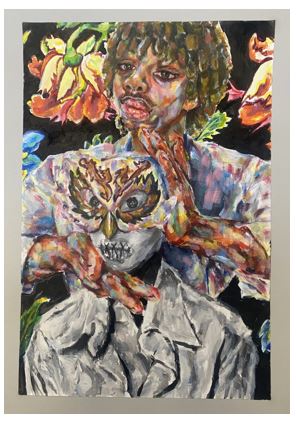
Journey Plans
